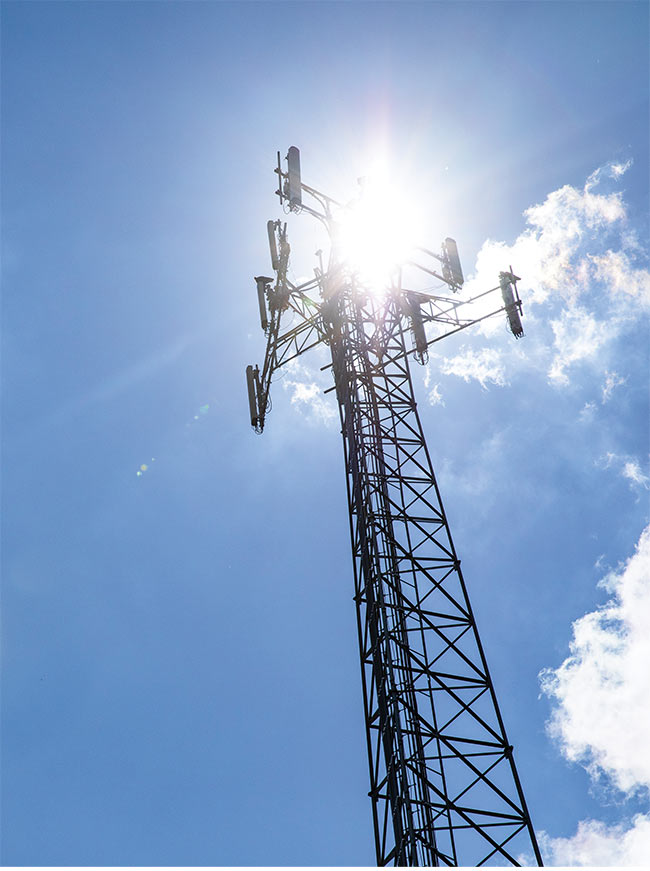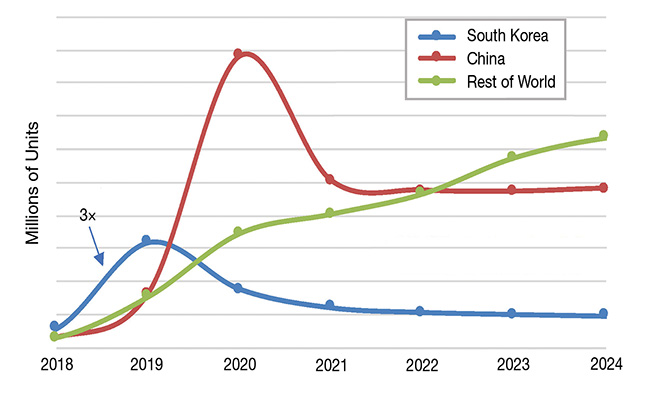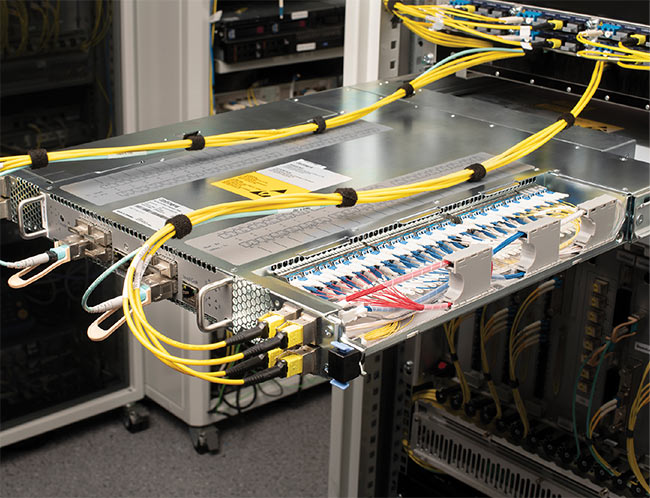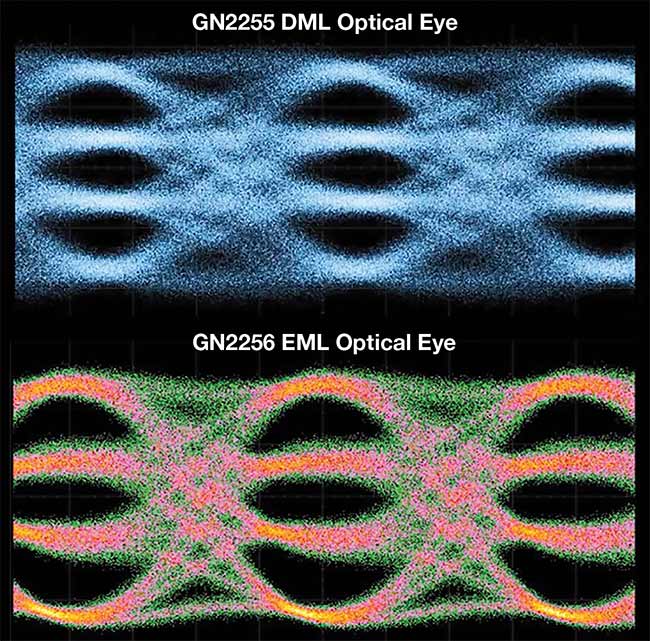Advanced optical components and encoding techniques are enabling 5G networks to achieve a tenfold speed boost over 4G technology.
HANK HOGAN, CONTRIBUTING EDITOR
The fifth generation of broadband cellular network technology (5G) offers a more than tenfold increase in speed compared to 4G. It handles a wider variety of devices, provides greater reliability, and operates with lower latency. These benefits signal why 5G services will reach $600 billion in global revenue by 2026, according to a study from Juniper Research.

Courtesy of iStock.com/Milepost430Media
Projected to comprise 77% of global telecom operator income, these moneys will be generated by people using smartphones and by machines talking to each other, said Sam Barker, head of analytics and forecasting at Juniper Research. “The growth is driven by both the growth in IoT and increasing 5G networks.”
Photonics-related hardware innovations plus software advancements enable the 5G rollout by improving optical network performance. In these networks, indium phosphide or indium gallium arsenide lasers send modulated beams, centered around wavelengths of 1310 or 1550 nm, down single-mode optical fibers over distances of a few kilometers or tens of kilometers.
At the other end of the fiber, detectors and associated gear decode the signal. Typically, suppliers package the source and the detector together into a transceiver. Increasing the transmission rate involves faster transceiver modulation, more complex encoding, or a combination of the two.

Shipments of high-speed optical transceivers. These devices support transmissions
>10 Gbits/s to the cell tower, or they may support fronthaul transmissions. Figures for South Korea are multiplied 3× to improve visibility. Courtesy of LightCounting.
The first widespread 5G deployment started in South Korea in 2018, said Vladimir Kozlov, CEO of optical networking market analysis firm LightCounting. Optical networks carried the fronthaul data to cellular towers and carried the backhaul data from them. China followed South Korea in 2019. Rollouts in the rest of the world began in 2020 and will continue over the coming years.
In South Korea, satisfying the higher bandwidth demand within the constraints of available fiber forced carriers to turn to dense wavelength division multiplexing (DWDM). This multichannel-per-fiber topology increased data carrying capacity substantially over the previous single-channel-per-fiber approach. Kozlov said of such deployments, “They can put in up to 40 channels per fiber.”
A similarly constrained fiber infrastructure exists in both Europe and in the U.S. Consequently, the transceivers are higher performing and more complex than in earlier mobile networks. For
instance, according to Steffen Koehler, vice president of product management and marketing at transceiver supplier II-VI, 4G links typically operate at 10 Gbits/s, while 5G links often operate at 25 Gbits/s. So the laser and detector in a 5G transceiver must allow higher bandwidth. “This also impacts the choice of laser technology and the associated electronics to drive them,” he said.
Low-cost Fabry-Pérot lasers can support 10 Gbits/s over distances up to
1.4 km, Koehler said. But at the 25 Gbits/s required for 5G, a more complex and
capable distributed feedback laser
becomes a necessity for practical fronthaul distances. With the use of DWDM, fine laser tunability reduces the required number of unique transceiver types. This simplifies inventory management and the deployment of components.
Fronthaul bandwidth could be made even higher by using a faster transmission rate. One possible approach involves moving from 25 to 50 or 100 Gbits/s links. Achieving these higher data rates currently requires using digital signal processors, however, which increase latency. The added lag in data throughput runs counter to the 5G specification of low latency. Using current technology, the sweet spot for achieving speed combined with low latency is about 25 Gbits/s, Koehler said, and he expects this transmission rate to increase as the technology improves.

Connected to a dense wavelength division multiplexing (DWDM) system, autotunable optics enable multiple channels to communicate over a single fiber. Courtesy of Infinera.
The greater bit rates of 5G attract attention. But according to Raza Khan, senior market manager for the Signal Integrity Products Group at Semtech, reduced latency and improved network synchronization are also critical to many potential 5G applications. Autonomous cars and industrial machines, for example, must possess minimal lag when transmitting and receiving data. Most of the fixed latency arises in the optical fiber and can be accommodated, Khan said.
The latency variation in the components then becomes critical for time-
sensitive networking protocols. To describe the contribution of the components, Khan said, “It’s how long the signal takes to pass through the different ICs [integrated circuits] and modules.”
Compared to the on-off, non-return-to-zero encoding used in 4G networks, one approach developed for 5G transmission employs optical transceiver drivers that enable four-level phase-amplitude modulation (PAM4) encoding to double the amount of data transmissions. Complex PAM4 signal modulation can occur even as systems meet power and latency specifications. Semtech is one company offering PAM4 components.
The 5G rollout is happening across live global networks, which presents a challenge for carriers, according to Markus Förster, head of product management at transmission technology supplier Pan Dacom Direkt. There may be five mobile operator nodes in a tower, resulting in a bandwidth demand up to 125 Gbits/s. This demand occurs in addition to the demand from existing 4G traffic, and all of this data often moves over existing fiber infrastructure.

The basic operation of autotunable optics. When signaling to each other, optical transceivers automatically adjust their wavelength without the aid of an engineer. SFP: small form factor pluggable; MDU: mux/demux unit; CPE: customer premises equipment; WDM: wavelength division multiplexing. Courtesy of Infinera.
Increasing each node’s bandwidth with minimal or no disruption requires using components that can multiplex several services into a single wavelength. Pan Dacom Direkt’s technology, for example, can support 64 DWDM channels, each operating at a signal rate of 400 Gbits/s, thereby achieving transmission rates of up to 25.6 Tbits/s over a single fiber.
Using smart autotuning transceivers is another way to get the most out of existing fiber and routers and other gear to enable the 5G environment. Wavelength-tunable transceivers allow older systems designed for communications over a single channel to work with newer wavelength division multiplexing technology. The technology has shown enough promise to prompt component suppliers Lumentum, II-VI, and others to form industry groups to push it.
Multiplexing transceivers offset
different wavelengths within a DWDM
system’s overall transmission window, which means that each DWDM channel has a spectral width of about 0.8 nm for transmission centered around 1550 nm. Two transceivers must be on the same channel to talk to one another in a conventional two-fiber system. For tunable transceivers, this means each device must align its transmission to the specific wavelength of the port that the transceivers are connected to. Ideally, this alignment should happen automatically and economically.
For optical networking component supplier Infinera, the transceiver-to-transceiver handshake that accomplishes these goals is achieved via signals that work similarly to Morse code within the communication channel itself, said Jon Baldry, the company’s metro marketing director. This simple on-off signaling strategy contains the basic information needed by devices at both ends of the fiber connection so that they can determine which channel they should use to talk to each other. Their scanning signal communicates which wavelength they are attempting to signal on and what signals they have received.
The entire autotuning process takes a few minutes to complete and requires no engineer, Baldry said. After establishing
a connection channel, the transceivers
employ the necessary data rates and
encoding. Handshaking can also employ
a side channel, using wavelengths that will not be used in subsequent data communications. He said Infinera chose the in-band approach for its products to ensure that its solution would work on the widest possible range of older hardware.
Pan Dacom Direkt’s Förster said he predicts rapid growth of bandwidth in the future, driven by applications such as 4K video streaming, the Internet of Things, and cloud computing. The overall effect will be that carriers will have to upgrade network backbones, which will translate into demand for optical transceivers, cables, and the chips that drive optical components.
II-VI’s Koehler foresees a fragmented industry in the future. One operator, for example, may deploy bidirectional transceivers over a single fiber while another uses two fibers and one-way transceivers.
In an alternative scenario, different operators may use different multiplexing methods. The industry’s lack of a single, standardized approach may transform as deployments and technologies converge. According to Koehler, standardization would help the industry. “Standardization drives down cost more than many other cost-optimization efforts.”

The Tri-Edge platform enables excellent performance with low-bandwidth 25G optics. In 5G networks, phase-amplitude modulation (PAM4) encoding creates four levels (horizontal lines). This technique doubles the data density of the on-off encoding that is employed in 4G networks. DML: directly modulated laser; EML: externally modulated laser. Courtesy of Infinera.
According to LightCounting’s Kozlov, machine learning and artificial intelligence may affect data flow. During the training phase, machine learning requires significant computing power as the software studies multiple instances of good and bad examples to distinguish the characteristics of each. The resulting model, however, requires several orders of magnitude less power for computing and communications. So, for manufacturers that utilize AI, extensive use of 5G may only happen sporadically. The ratio of 5G data needs between training or retraining and operation could be as much as a 1000:1.
These and other innovative applications excite interest. But Kozlov said many geographical areas that are important to 5G technology, in particular, and to optical networking, in general, are located in regions of rising geopolitical tensions. The threat of significant supply chain disruptions, or worse, is real and could
affect any future applications or the rollout of the next cellular networking technology, 6G.
With the deployment of 6G potentially beginning within five years, its network technology may make use of optical connections running at 800 or 1600 Gbits/s, which is at least 4× faster than today’s 5G connections. Transmission rates within these ranges are already available in data centers that also use optical networking technology. The distance between end points in a data center, however, is much less than the distance between the end points in a telecom network. But proving out the technology in shorter runs in a data center may help when it comes time to achieving such data rates over longer hauls.
Then the pioneering technology of datacom will become available for telecom to expand upon. Kozlov said, “Data centers are doing a great service.”